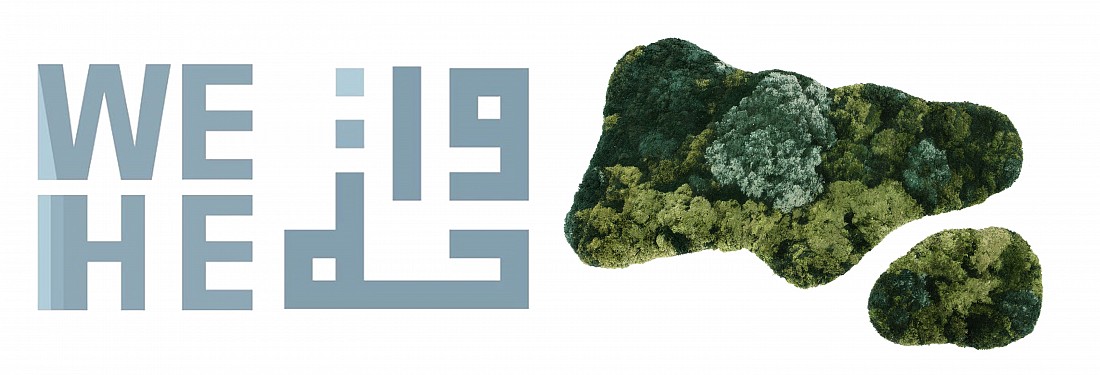
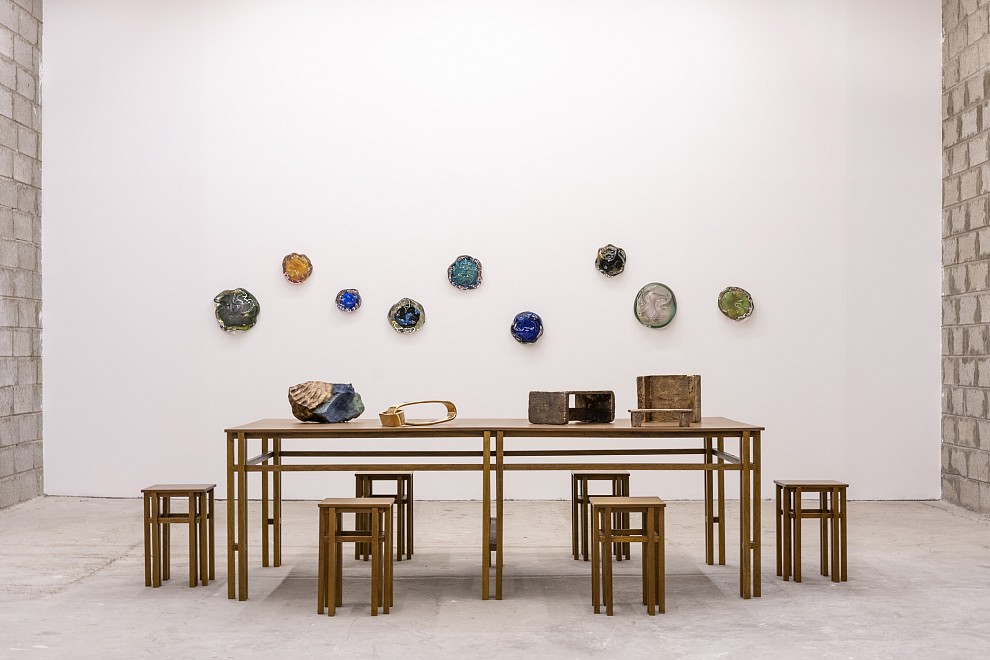
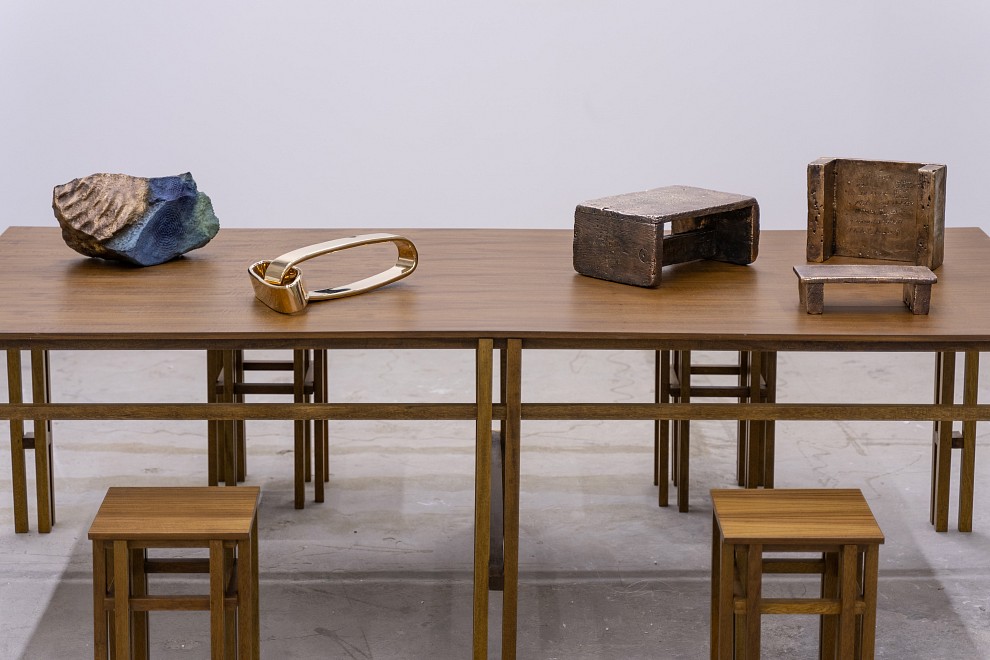
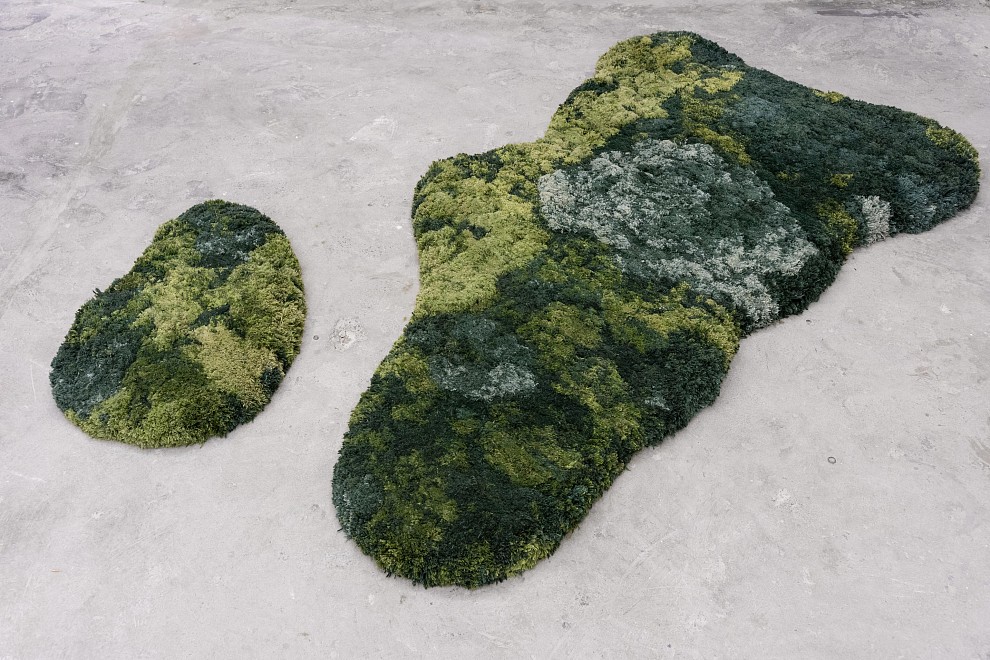

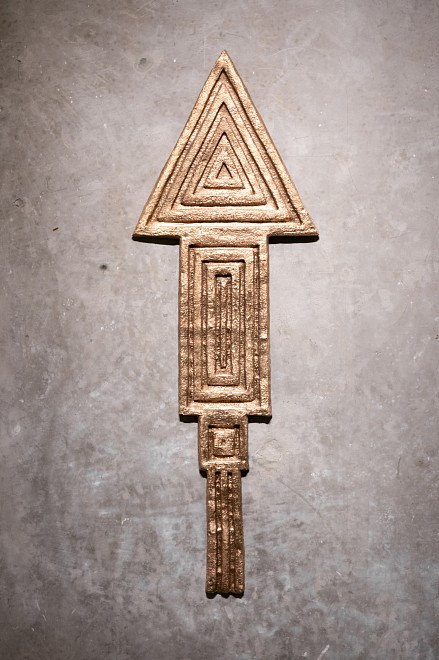
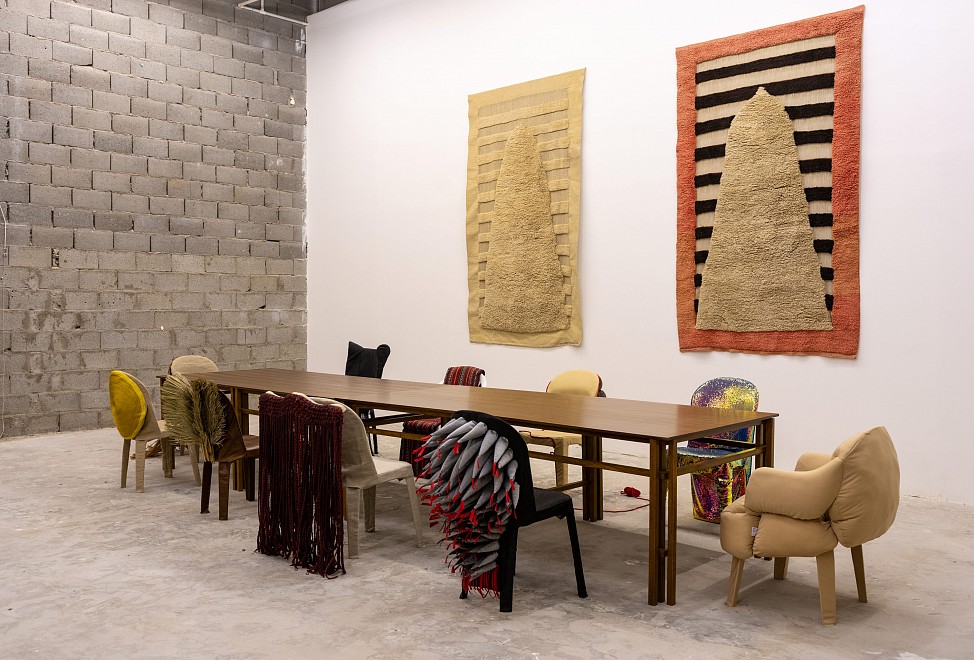
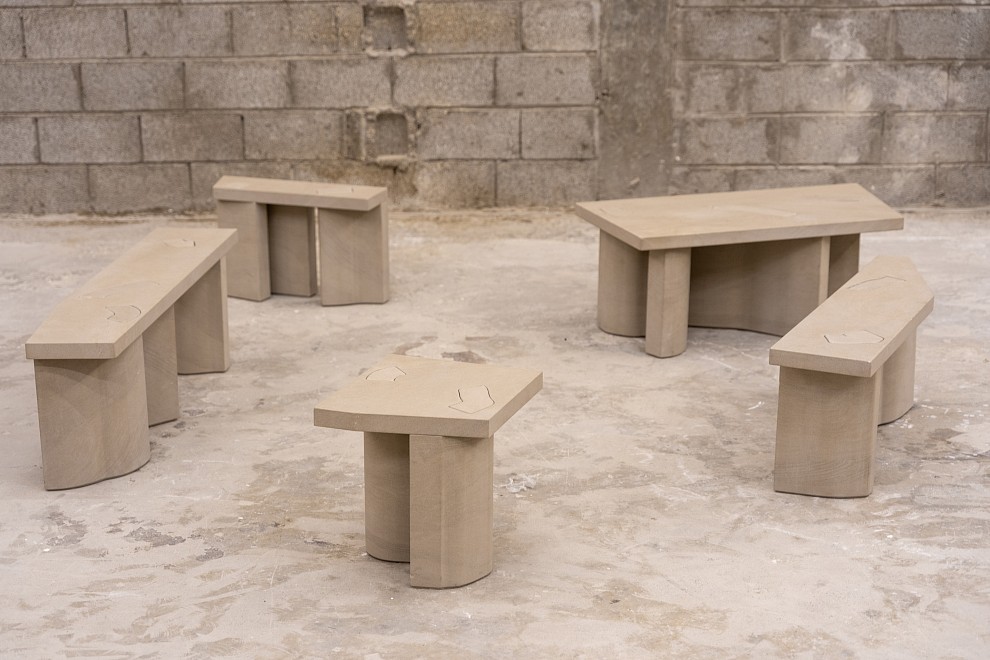
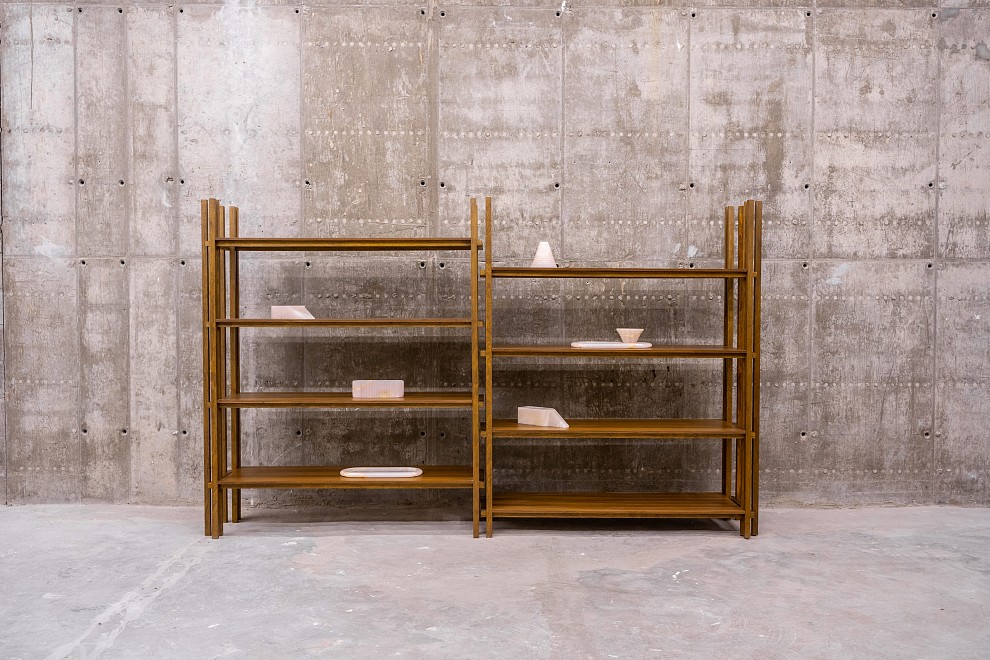
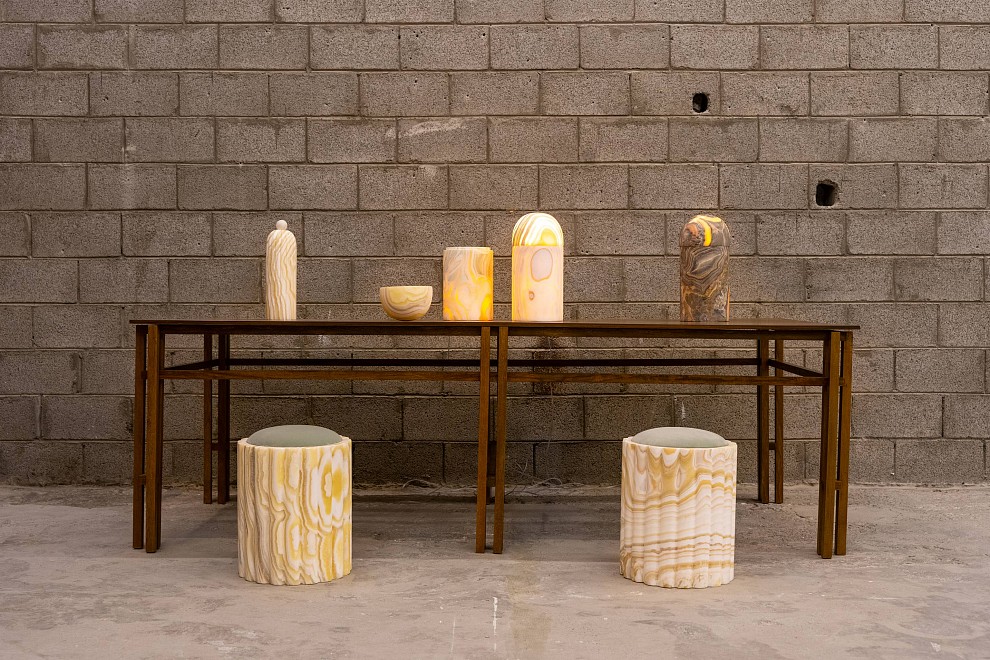
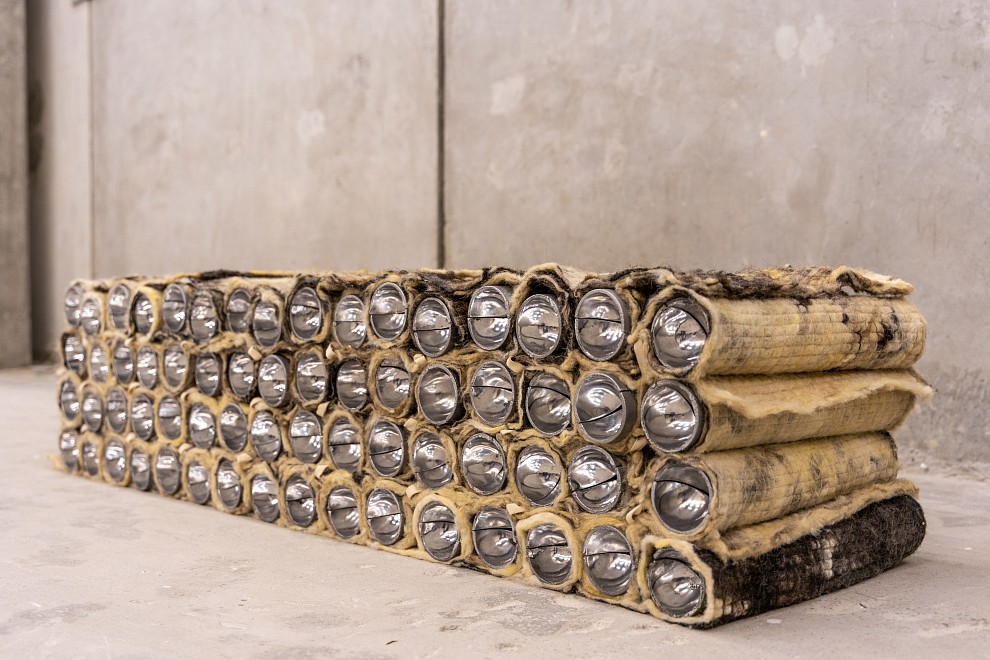
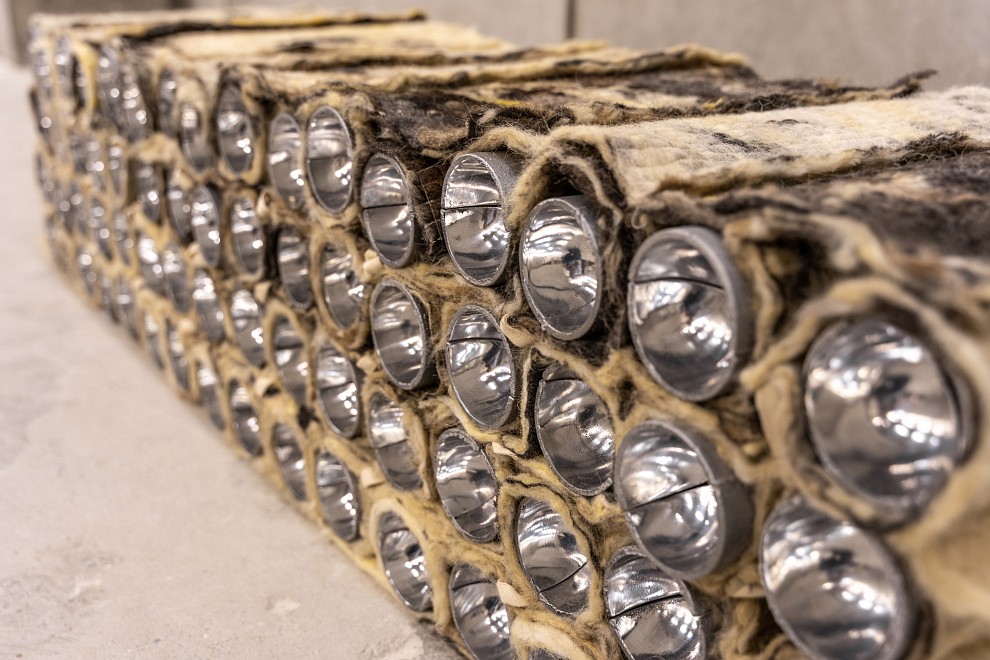
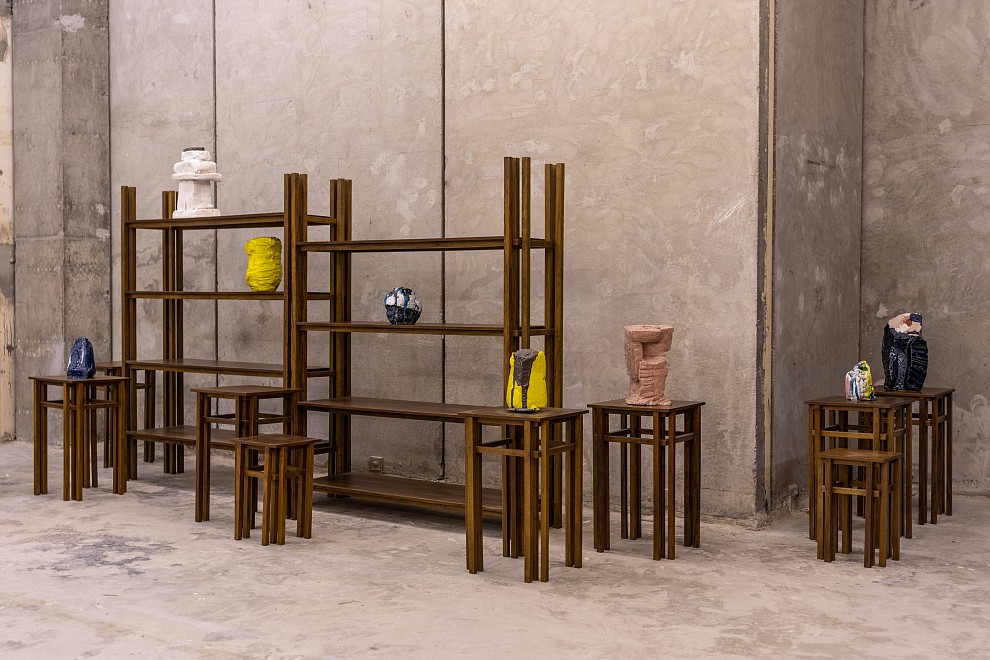
ATHR GALLERY is delighted to announce the exhibition WEHE, curated by Nicolas Bellavance-Lecompte, for a first collaboration with the gallery. Bellavance-Lecompte is the co-founder of Carwan Gallery (Beirut) and Nomad Design and Art Fair (Monaco, St Moritz and Venice) and has recently been appointed the Artistic Director of the Bronze Foundry Battaglia in Milan.
The exhibition will gather a collective of artists, designers and architects specialised in collectible design from the region with new commissions of bronze works produced by the Foundry. WEHE explores the meaning of primordiality and its connection to the desert environment. Oasis dwellings in particular, with their unique geographic context and the preservation of old traditions from local inhabitants, combine concepts of modern living with technology and primordial lifestyle. A balance is set between a contemporary understanding of the world and an environment surrounded by essential and meaningful objects, together generate a ritual. The word WEHE comes from Ancient Egyptian language and means a “dwelling placeâ€, WEHE is also the origin of the word waaha in Arabic and “oasis†in Greek.
The exhibition explores the idea of how objects could inhabit an imaginary primordial dwelling and generate a ritual. The ritual should take shape in the idea of entering a form of contemporary shelter, a place one would like to find after a journey and interact with very few but unique objects.
WEHE DESIGNERS
Taher Asad-Bakhtiari, Flavie Audi, Bahraini-Danish, BrickLab, Omar Chakil, Karen Chekerdjian, Ghaith&Jad, Rasha Nawam AND Mary-Lynn Massoud, Carlo Massoud AND Anastasia Nysten.
Taher Asad-Bakhtiari (Iran)
Taher Asad-Bakhtiari (b. 1982, Tehran) is a self-taught artist whose approach focuses on experimentations on objects and textiles to create and reinvent techniques and uses. He has developed several bodies of work including The Tribal Weave Project that breaks hundreds of years of weaving traditions. He re-created pieces that take on new functions as wall partitions, wall coverings, furniture spreads, challenging in their sweep the orthodox notion that “kilims and gabbehs are for the floor.†His work has been shown in several international exhibitions, including the Met (New York), Carwan Gallery (Beirut), Wallpaper* Middle East Revealed, Qattan Foundation (London), and Katara Art Centre (Doha).
Woven by semi-nomadic tribal women using entirely naturally-dyed, hand-spun wool, each piece can require up to four months to create, depending on size. Unlike the traditional Iranian carpet, Iranian tribal weaves display quite simple patterns, because tribal people weave what they see: the sky, the mountains, the earth, the animals. Inspired by the power of this puritan philosophy, Asad-Bakhtiari imagines a process to further strip the tribal weave to its bare elements, starting with the weaving process itself.
Flavie Audi (Lebanon)
Audi’s practice finds its point of departure within the manipulation of glass. Glass plays a crucial part in contemplating a speculative utopian world where humans create cosmic fragments and new landscape formations. Her Cloudscapes are created using a combination of blown glass, colour pigments and semi-precious materials, such as fine gold and silver. When added to the glass, these elements spark chemical reactions, making the pieces simultaneously scientific and open to chance. The results of Audi’s skilled alchemic glass-blowing process are tactile and sensual, yet contained in a solid glass sculpture. Their undefined edges and fluctuating colours change constantly under different lights.
Bahraini—Danish (Bahrain and Denmark)
Established in 2016 architects Batool Alshaikh, Maitham Almubarak, and Christian Vennerstrøm Jensen, bahraini—danish is a collective that uses cultural differences, both social and professional, as a means to create. The exhibition will include seven coffee and side tables from the series Unsighted Tables made of Giallo Avorio marble. Each table is a rectangle cut in a way that can be placed against any wall in a room. With all sides cut and aligned to an invisible rectangle, the tables are inscribed in a space within the space and make-up a group of familiar objects with an implicit logic. This project was produced with the support of Casone Group, experts in marble production in Italy.
The collective represented Bahrain in the Venice’s Architecture Biennale in 2018 and their work is featured in the 58th Venice Art Biennale in 2019.
BrickLab (Saudi Arabia)
Established in Jeddah in 2015 by the brothers Abdulrahman and Turki Hisham Gazzaz, bricklab is dedicated to the examination of the design discipline as it intersects with the social, political, economic, and cultural networks that implicitly form our built environment. Through an analytical process of identifying sand from various locations in Saudi Arabia, what appears like an oversized set of tiles have been created; titled Sand Scriptures, each tile highlights the granularity, color, and locale of the reclaimed sand's origin in an experimental process of mold-making and concrete-mixing. The tile becomes a scripture, a document, a record of geographical stratification.
Bricklab designed and developed the very first National Saudi Pavilion at the 16th Venice Architecture Biennale, 2018.
Omar Chakil (Egypt)
Of Egyptian/Lebanese roots, Omar Chakil was raised in Paris and is self-taught. He developed the series, Volutes, made of unvarnished, untreated, raw Egyptian alabaster which he calls Pharaonic alabaster to differentiate it from other kinds of onyx marbles. Launched during Beirut Design Fair 2018 and ‘House of Today’ Biennale, the series examines the energy of movement and sensuality inspired by the stone’s ancient healing, mystic and soothing swirl-like motifs. “The idea was to find an emblematic Egyptian mineral and use it to create contemporary objects that would build bridges between past and present, craft and design, earthly and ethereal...â€, says Chakil. Volutes is handmade in Egypt merging his Egyptian roots with his French aesthetic heritage through sobriety and grace.
Karen Chekerdjian (Lebanon)
One of the most established designers in Lebanon, Chekerdjian received her master’s degree from Domus Academy. Her work has been shown in numerous international exhibitions including in Copenhagen, Milan, Tokyo, and Beirut. She has been featured in Sfeir-Semler Gallery (Beirut) as well as Nilufar Gallery (Milan). Over the Forest is the result of a collaboration between Karen Chekerdjian and Iwan Maktabi. An experiment with textiles, aerial views of forest canopies become a textured carpet and surface sculpture of diverse colors and terrains, bringing the lushness and vastness of nature into the indoors.
Ghaith and Jad (Lebanon)
Ghaith Abi Ghanem & Jad Melki trained at Raëd Abillama Architects (Lebanon) and at Herzog and de Meuron (Switzerland), before setting up their collective. Their practice allows experimentation to freely sculpt their designs and focuses on being true to material and responsive to context.
Developed for Wehe, from a slender metallic capsule emerges rug, recliner, bench and banner: an object with multiple lives and myriad forms. Myriad was inspired by the resilience and ritual of traditional life, the raw texture of undyed wool can be spread out as carpet, or suspended from the wall. When wrapped around its canister, the fabric gains volume and weight and takes on a contemporary form, becoming a seat or headrest, responding to the body at ease. Felted, quilted, cut, cast and polished, the piece’s materiality reflects centuries of local craftsmanship. Ghaith&Jad’s object marries the mysterious with the utilitarian, inviting an encounter both visual and tactile. A union of historic craftsmanship and contemporary design, this object defies single definition: at once architectural and ambiguous, hard and supple, protective and inviting—a body of both bone and fat. Â
Rasha Nawam and Mary-Lynn Massoud (Lebanon)
Massoud trained in ceramics at La Manufacture de Sèvres in France and Nawam studied ceramics in Lebanon and the US. They have been collaborating since 2007 and have participated in a number of solo and group exhibitions in New York, Paris, Dubai, Basel, Milan, Monaco and Beirut. Their latest works, Essai, demonstrate a synthesis of materials, colors and textures. The artists explore different material combinations ranging from stoneware, glass, metal powder, glaze and porcelain to name a few. Their innovative approach has led to unique formations, further developed with every piece creating rugged shapes, intensified with vibrant colors and a multitude of textures.
Carlo Massoud (Lebanon)
Massoud is a product designer and interior designer; he pursued a Master in Product Design at ECAL, the School of Art and Design in Lausanne. Massoud questions the social aspects of his environment, channeling these constructs into objects that often push the viewer to investigate their knowledge of the subject. Created in timeless Pink Onyx, Pink Cities are modern-day relics that trigger memories and associations of structures, spanning the globe, deeply embedded in our spatial memory.Â
One can decode them to discover iconic architectural interpretations of Casa Malaparte in Capri, or the Guggenheim Museum in New York. Other languages bring references to monuments from Berlin or London and ancient minarets from Iraqi mosques.
This special edition is exclusive to ATHR Gallery, every model is an edition of 8Â + 2AP.Â
Anastasia Nysten (Lebanon)
Nysten trained at Karen Chekerdjian design studio and was part of lighting designer Michael Anastassiades’ team. Since 2015, Nysten started experimenting in her own studio with objects and interiors that combine stories of different cultures.
The Monobloc chair - an iconic object that was mass produced in the 1950s, has revolutionized manufacturing and taken over our homes and businesses as a low-cost seating option. Nysten’s observation of its mass presence led her to an experimental project that relates to our social behaviour; how cultures and places affect us and the way we perceive ourselves. The material in this series of chairs has been sourced from various locations in the region. The importance of the craftsmanship and the time dedicated to produce each embellishment is contrasted with the pace of the plastic chair’s making, known to be manufactured at a speed of 2min/chair. Nysten has collaborated with sewing amateurs to haute-couture designers and craftsmen to develop this collection of chairs.



